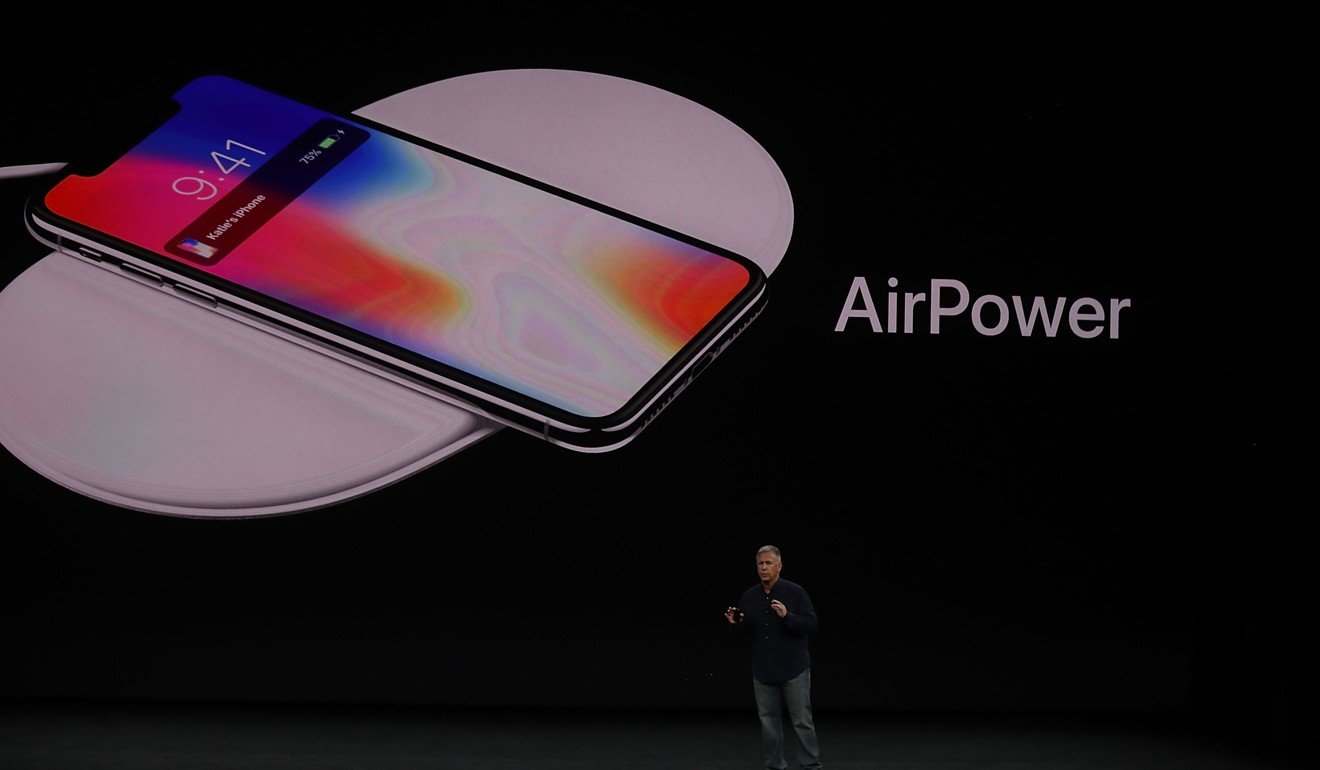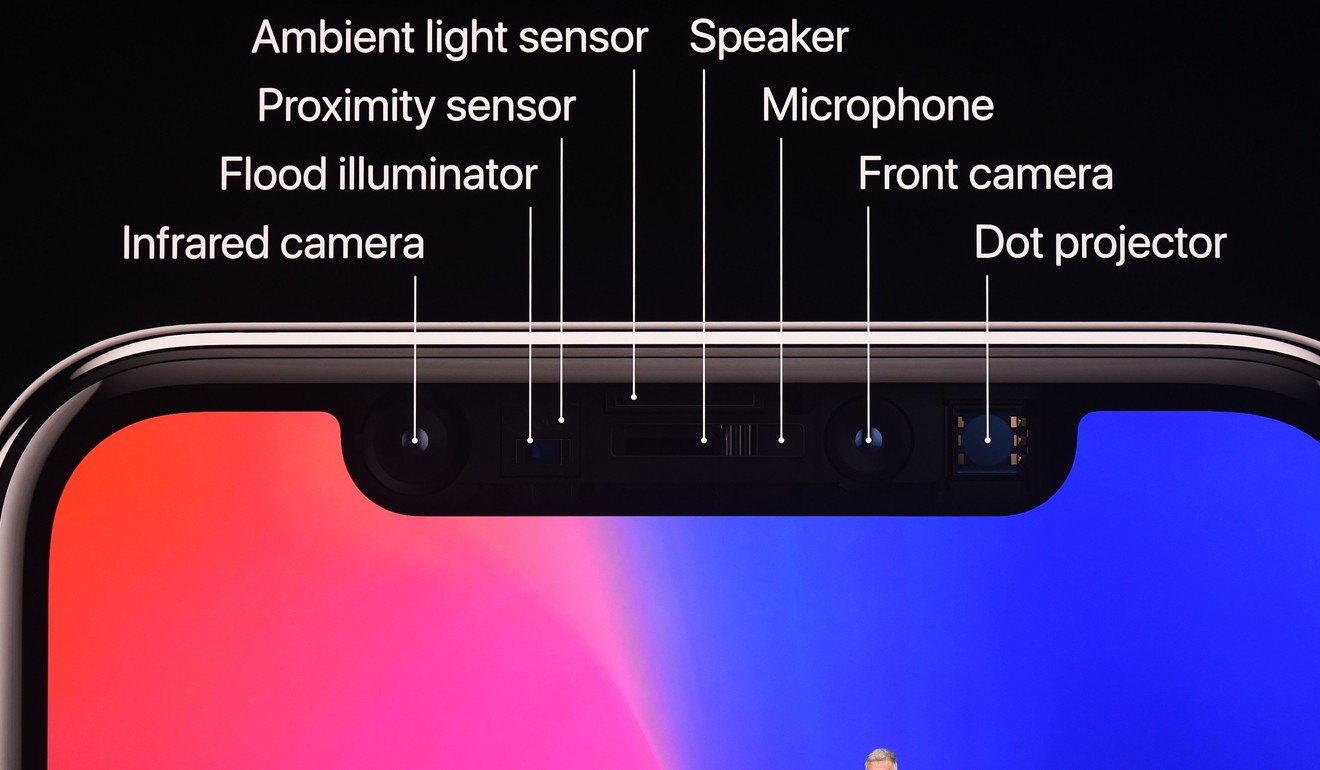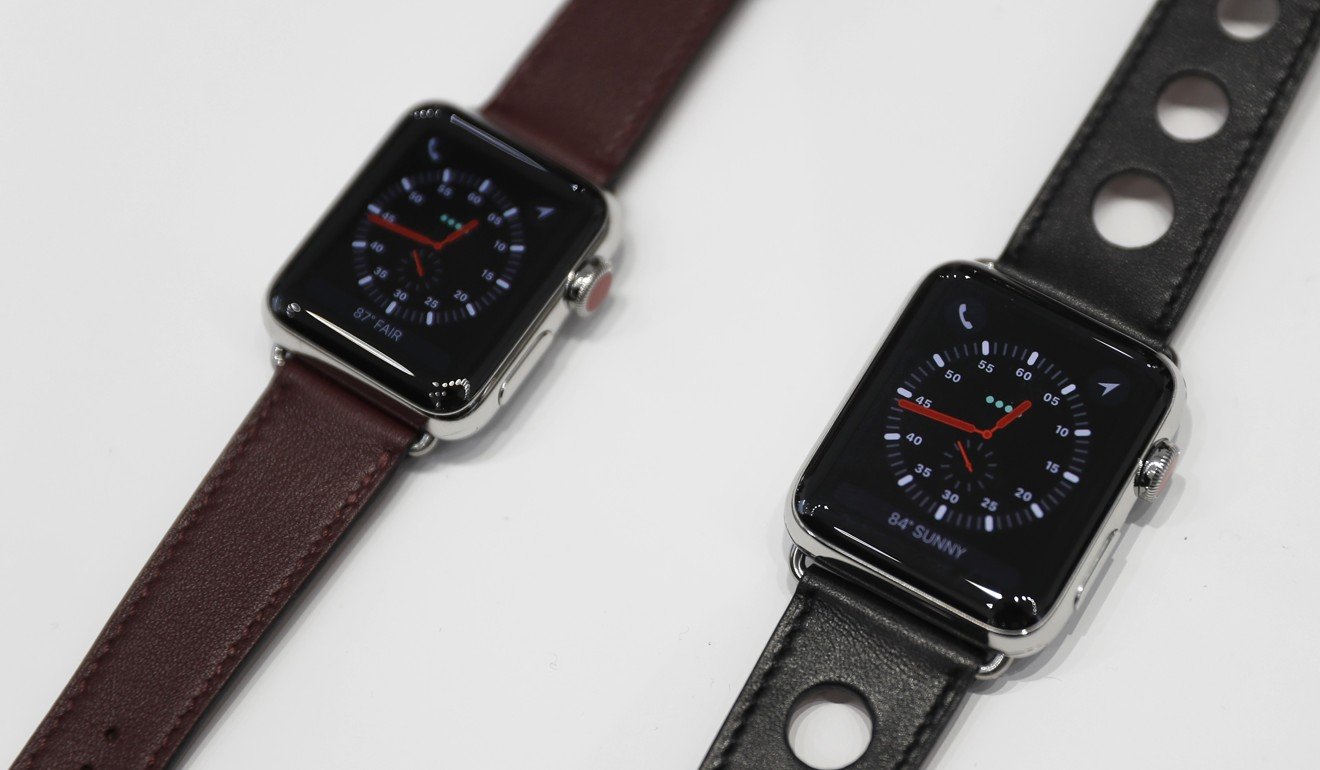
Apple launches ‘the future of the smartphone’ in new flagship iPhone X
New phone features include augmented reality technology, facial recognition and wireless charging

Apple launched its much-anticipated new flagship device, the iPhone X, on Tuesday in the United States as “the future of the smartphone”, with an edge-to-edge display and an arsenal of features led by facial recognition software, wireless charging and augmented reality technology.
Consumers from more than 55 countries and territories around the world – including Apple’s Greater China business comprising the mainland, Hong Kong and Taiwan – can pre-order Apple’s most expensive iPhone ever, with prices starting at US$999, from October 27 and purchase either its 64-gigabyte or 256GB version from November 3.
Confirming recent speculation, Apple also updated its iPhone 7 and 7 Plus models with the new iPhone 8 and 8 Plus models featuring glass and aluminium cases, as well as support for wireless charging and augmented reality. The AirPod wireless charging mat will be sold separately.
The iPhone 8 handsets will be available for pre-order in more than 25 countries and territories on Friday and in stores from September 22.

In addition, the new cellular-capable Apple Watch Series 3 was also introduced at the same event in the Steve Jobs Theater at the technology giant’s spaceship-like Apple Park campus in Cupertino, California.
The company also updated its Apple TV device to support so-called 4K ultra high-definition television content.
“No doubt, this product line-up sets up a big year for Apple,” said Ben Bajarin, a principal analyst at US technology research and advisory services firm Creative Strategies, in an online post from the Apple launch event.
The new iPhones will likely help Apple boost the replacement cycle among its large user base worldwide, as well as heat up its battle against aggressive Chinese Android smartphone brands led by Huawei Technologies, Oppo, Xiaomi and Vivo.
Neil Shah, research director at industry analyst firm Counterpoint, predicted Apple’s introduction of cutting-edge features in its latest devices will result in a “super cycle”, which will see a large base of iPhone 5s, 6 and 6s Plus users upgrade to the new models.
That could augur well for Apple’s Greater China business after the company reported last month its sixth consecutive quarter of year-on-year revenue decline.


Apple chief executive Tim Cook pointed out that the company has again raised the bar for the smartphone industry.
“Our teams have been hard at work for years on the future of the smartphone,” Cook said. “Now, 10 years later it is only fitting we are here, in this place on this day that will set the path for technology for the next decade.”
The iPhone X – pronounced “ten” – introduces an all-screen display built with an 5.8-inch organic light-emitting diode touch screen that Apple has branded a “super retina display”. It helped replace the home button with a simple “swipe up” motion to open and close applications.
“For more than a decade, our intention has been to create an iPhone that is all display. The iPhone X is the realisation of that vision,” said Jony Ive, Apple’s chief design officer, in a video presentation.
The so-called TrueDepth camera system that is in a small notch just above the display allows users to securely unlock the iPhone using its sophisticated Face ID function. Face ID, which only works when the user looks at the iPhone, is also designed to prevent spoofing by photos or masks.
Powered by Apple’s new A11 Bionic processor and iOS 11 mobile operating system, the Face ID function is also essential to playing immersive augmented reality games to sharing new animated emoji messages dubbed “animojis”, according to Philip Schiller, Apple’s senior vice-president of worldwide marketing.
Augmented reality provides an overlay of digital imagery onto the real world, similar to the Pokemon Go game.


Bajarin described these models as “solid upgrades” that will “meet the needs of many consumers who don’t need the top-end iPhone”.
The global production volume of iPhones, including recent models the iPhone 7 and 7 Plus, is expected to reach 227.5 million units this year, up 5.6 per cent from last year, according to market intelligence firm TrendForce.
It estimated total worldwide smartphone production will reach around 1.4 billion units, a 4.8 per cent increase from last year.
The new Apple Watch Series 3 with cellular function will initially be available in 10 countries and territories, including mainland China, this Friday.

Subscribers of China Unicom, the country’s second-largest mobile network operator, will be the first to get support for this device that does not need proximity to the iPhone to make and answer calls.
Apple said it pioneered an industry-first design that uses the display of the watch itself as both a transmitting and receiving element for 4G and 3G connections. Apple also introduced a built-in electronic subscriber identity module (SIM) that is over one-hundredth the size of a traditional SIM card, making over-the-air activation possible without compromising space.
Neil Mawston, the executive director at research firm Strategy Analytics, predicted cellular smartwatch shipments to “grow 120 per cent worldwide” this year.